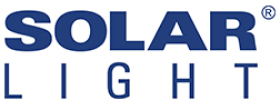
Sometimes it might seem obscure, but photovoltaic research saves lives.
Whether it’s for makeup, sunscreens, medications, textiles, fabrics or lotions, the in-vivo SPF and broad spectrum research industry plays an integral part in our daily lives.
Proper broad spectrum analysis and SPF testing is key in the prevention of human exposure to solar radiation. Extended exposure to solar radiation has different effects on individuals and products.
It’s true that melanoma can stem from exposure to sunlight, but that doesn’t mean that sunlight is bad for people.
In fact, sunlight is scientifically proven to be a great source of Vitamin D. Spending some time in the sun is great for health, but everybody is different and there are many factors to consider including:
– Weight
– Level of skin exposure (For example, being in a suit, versus being in a bathing suit.)
– Medications being taken at the time
– Age
– Location (Being closer to the equator means more radiation and less time in the sun)
– Season
– Cosmetics being worn
That being said, somebody needs to quantify these things and catalogue not only the effects of solar radiation on people, but the impact solar radiation will have on the things that people use.
Some antibiotics can cause sensitivity to the sun. Likewise, dermatological products also have impacts on sun sensitivity; especially true for people using medicated ointments.
Instead of just throwing these pharmaceutical products on people and “seeing how it goes”, the photovoltaic research industry works tirelessly to quantify and categorize the energies and potential dangers of solar radiation to a product surface, and this contributes to the knowledge base dermatologists use in developing sunscreens, which are thoroughly tested and researched and are still safe and affordable thanks to efficient research practices.
For example, through research of solar radiation and sunlight scientists were able to identify the presence of Ultraviolet Light or UV. Then, they separated it out to UV-A and UV-B types of solar radiation. Through the development of this science they were able to attribute many health benefits to controlled and safe sunlight exposure including
– Lower blood pressure
– Better sleep cycles
– Better mood control
– Better skin resistance
If this isn’t proof enough, look at these comprehensive studies from the Journal of Investigative Dermatology on photobiology, the study of the effects of light and solar radiation on living things.
The research is out there, and Solar Light has dedicated itself to moving the applications of solar research into the next generation of technology with the latest and greatest developments in SPF and PV Cell testing.
Next time you put something on your skin or take an antibiotic, think about the unseen part that photovoltaic and photobiological researchers have played in getting that product to you.
